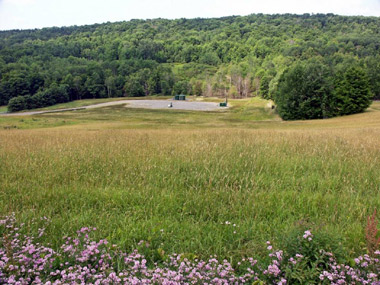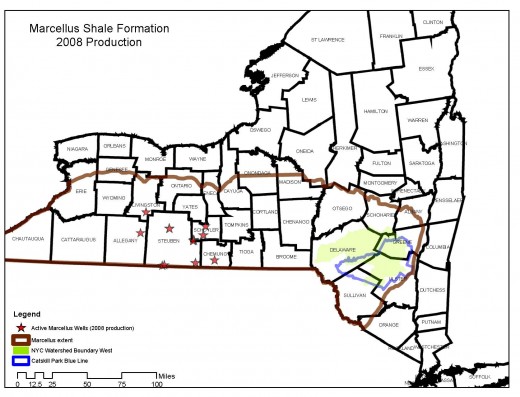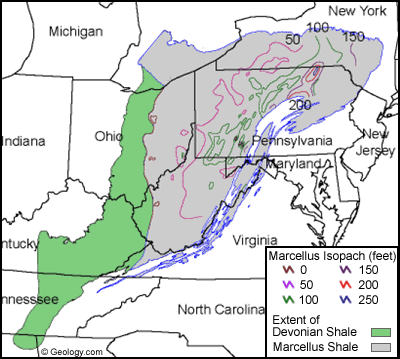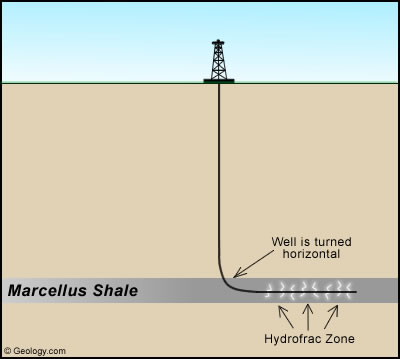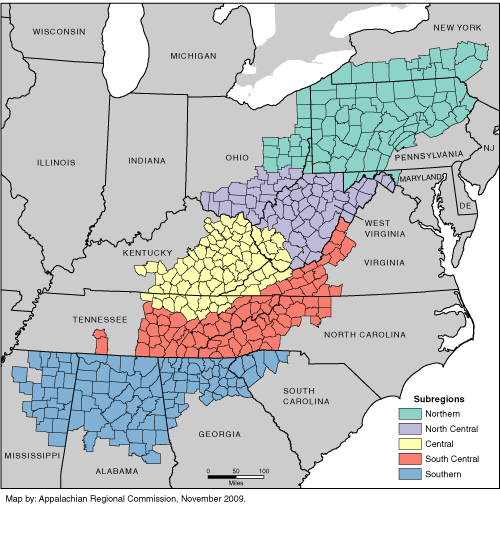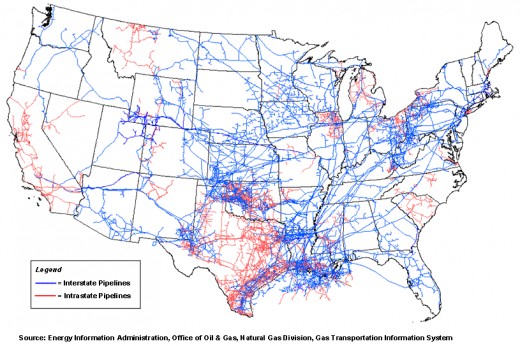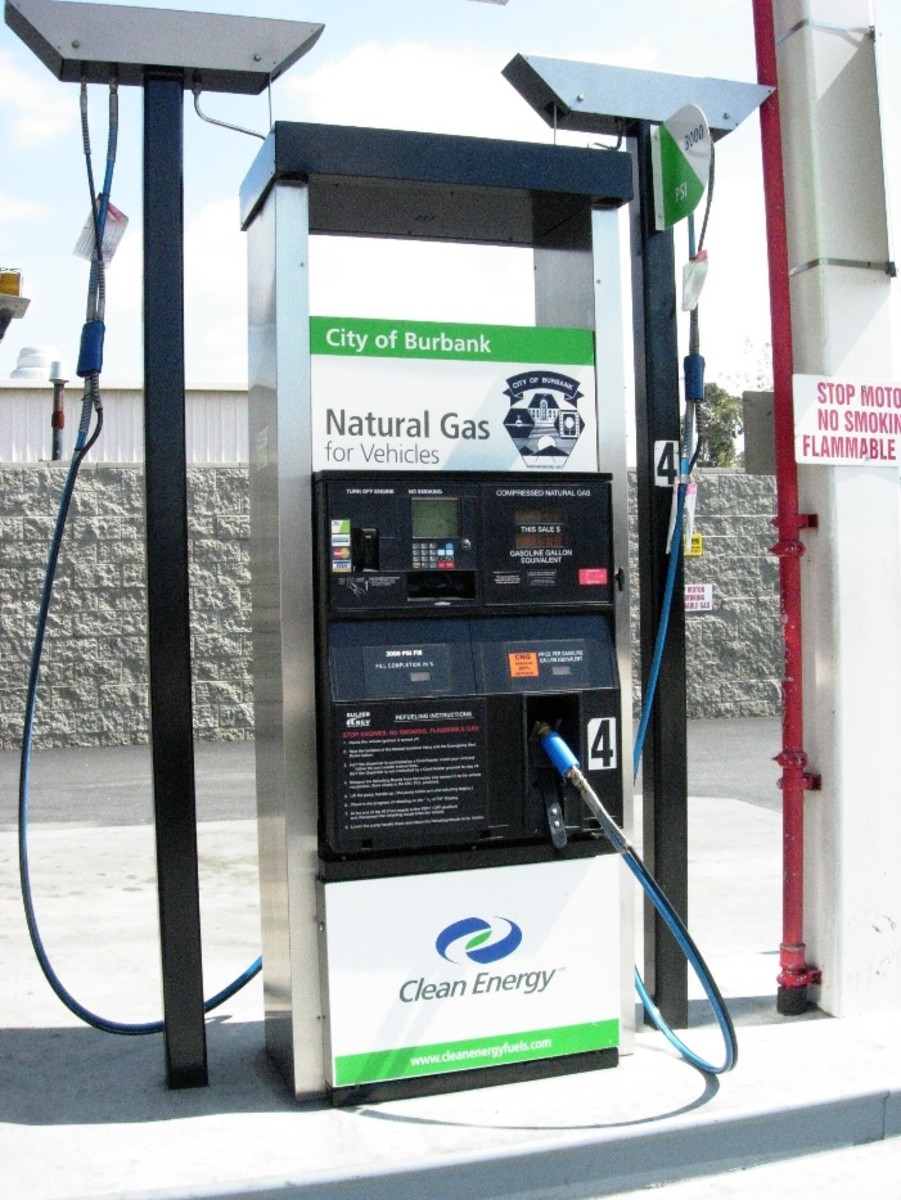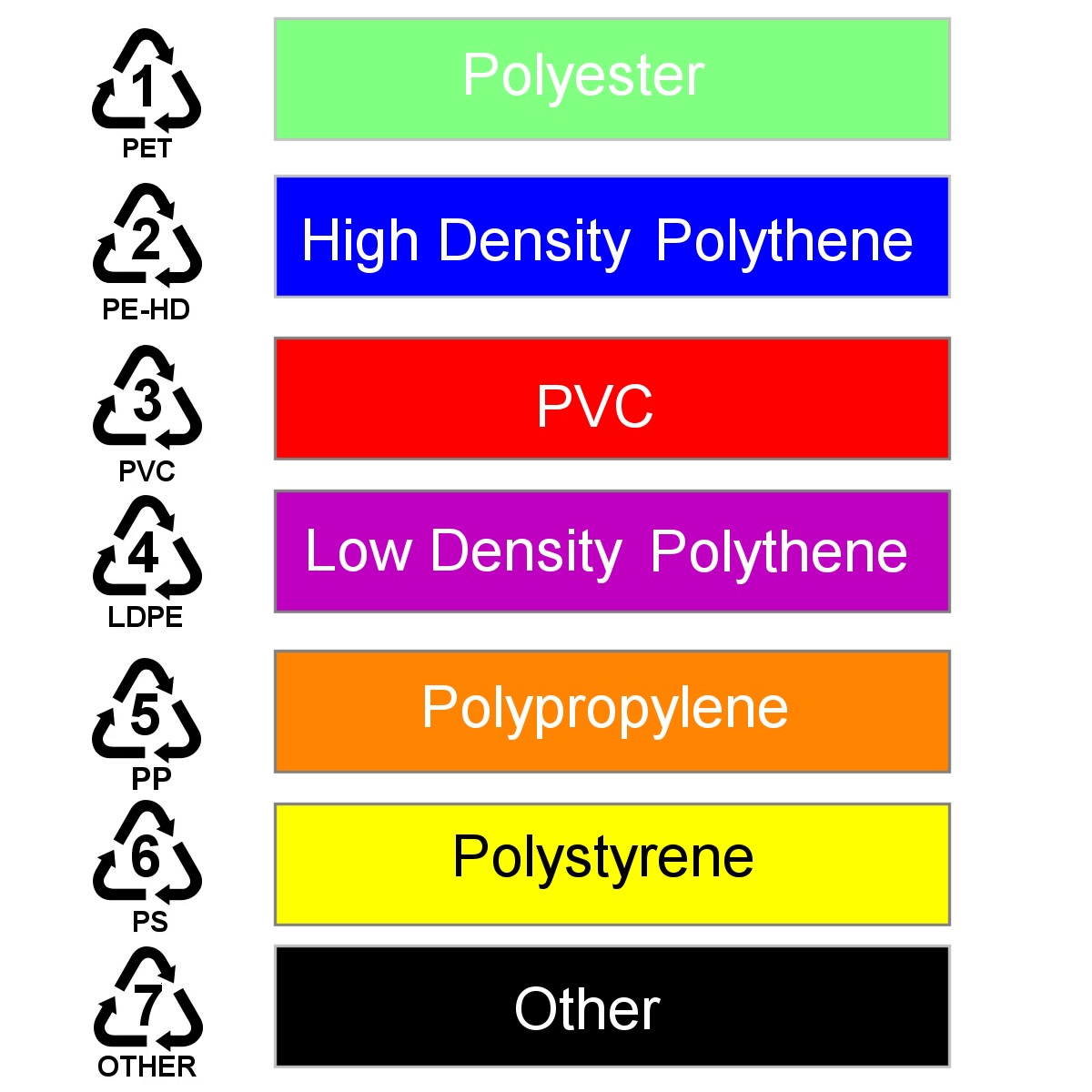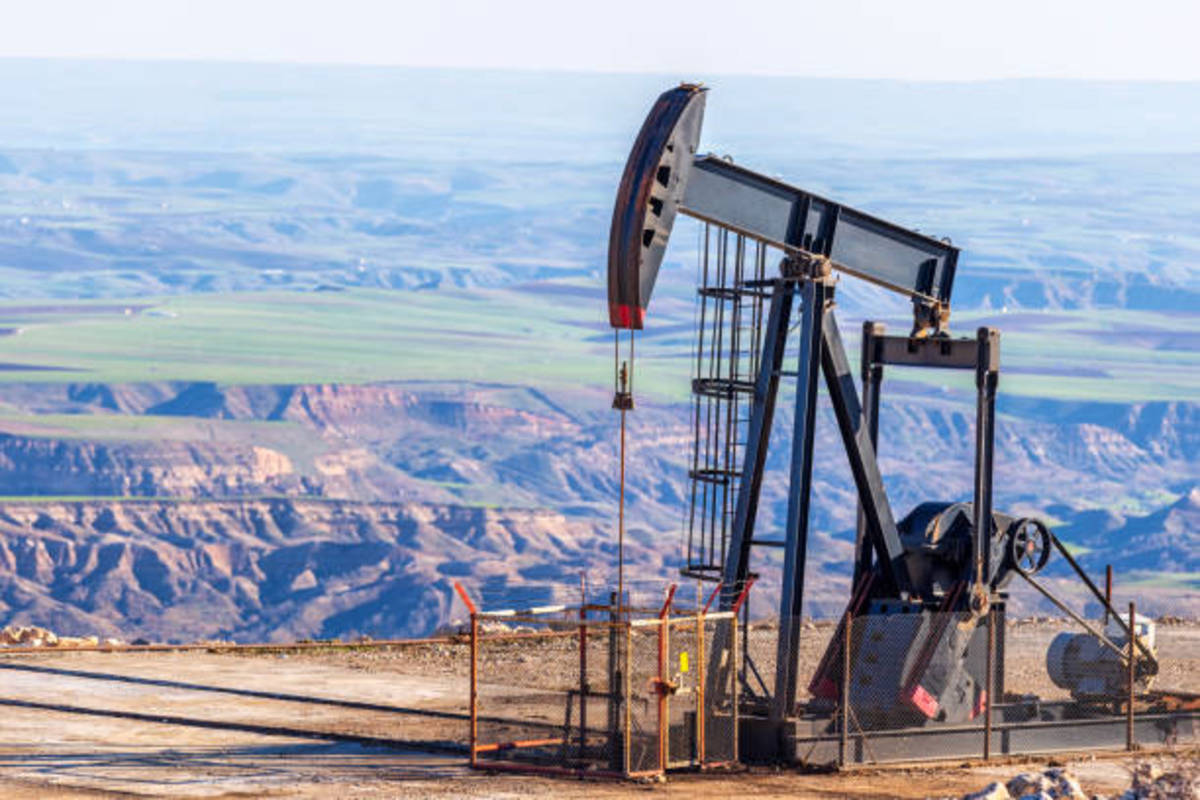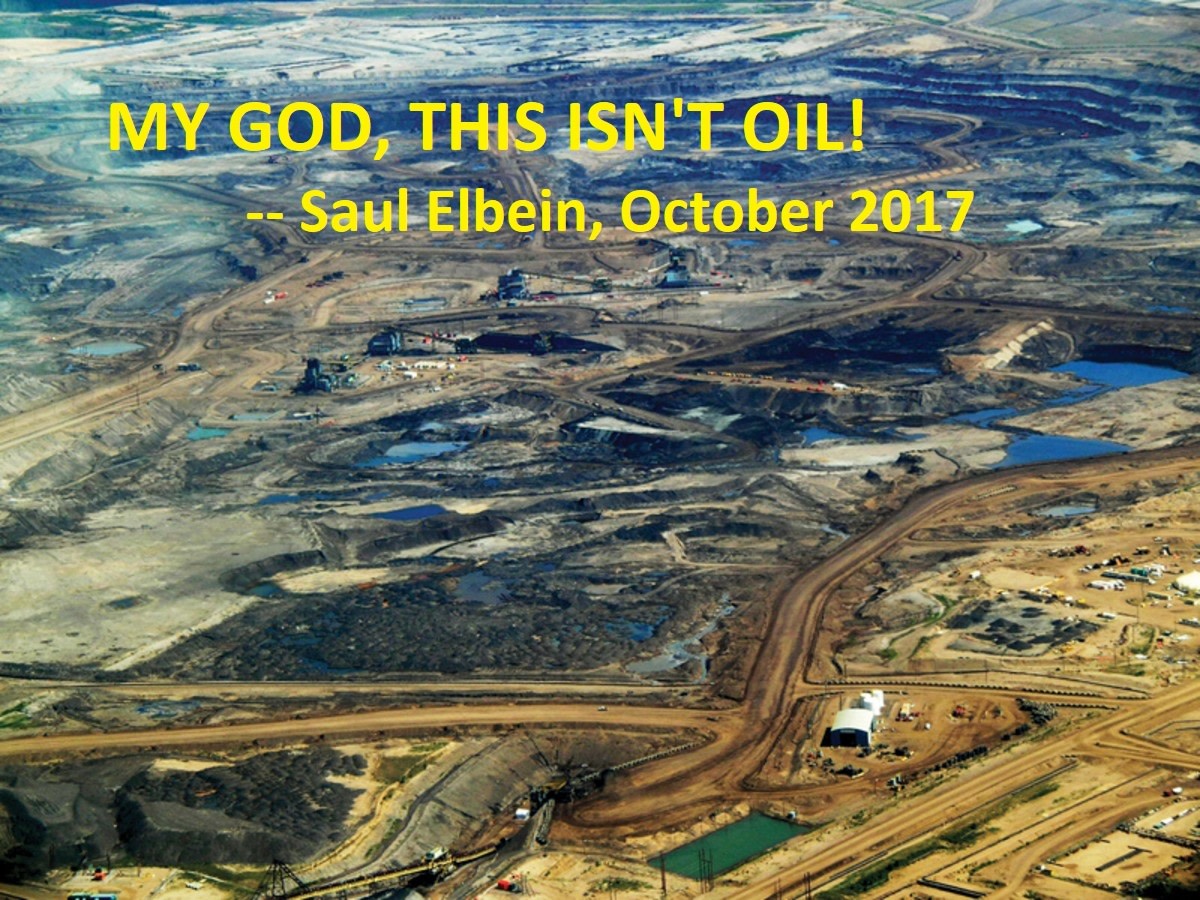Marcellus Shale Natural Gas Drilling in NY
Nothing stirs up controversy like drilling for natural gas, or oil for that matter. Even before the Gulf of Mexico oil spill, people have been fighting it out verbally at Town Hall meetings across western and the Southern Tier of New York. Everyone has an opinion, from the environmentalists worried about chemicals leaching into local water supplies to the land coalitions formed to protect individual landowner’s interests.
Marcellus Shale Formation Maps and Images
Click thumbnail to view full-size





Where is the Marcellus Shale?
The Marcellus Shale is located in an almost identical location to the map of Appalachia. It extends from Tennessee to New York (see image). Ironic, considering this is one of the poorest areas in the United States, even today. The possibility of families finally crawling out of poverty by a windfall named “natural gas” has given hope to thousands. With an economic downturn that has increased unemployment to new highs, especially in Steuben County, New York, the possibility of natural gas drilling has many getting ready to line up at local unemployment offices.
While drilling can cause an employment boom in areas where drilling is taking place, it is a bone of contention for many environmentalists. This is especially true in areas where hydrofracting is taking place. It is important to note, however, that not all natural gas drilling employs the hydrofracting process.
To Fract or not to Fract, that is the Question
A hot topic on many people's minds is whether hydrofracting should be allowed in the drilling for natural gas. This is one of the reasons for the delay in issuing permits for natural gas drilling in New York. Fracting is not needed in most cases to drill for natural gas. The drilling can be done vertically. Fracting is only done when the drilling needs to be done horizontally, after drilling down vertically (see image).
Environmentalists are concerned that the chemicals being used in the fracting process may leak into the above water tables (since drilling for natural gas is below the water tables). The fracting process produces what is known as brine or TDS (total dissolved solids)- a salty backwash that is a result of high pressure water and sand being pumped into the gas well. The salt content is three times that found in the ocean's salt water. Gas companies are not releasing the information on the chemicals being used in this process to the general public, though many people already know the contents of this process. The companies do not need to release this information to the public because it is proprietary information. It is known that benzene and cadmium are among the toxins contained in the backwash.
A concern is how the TDS or brine should be disposed of. In Pennsylvania it is disposed of in local waste treatment plants, but there is a question as to whether these plants are able to handle all of the waste water being created by the drilling boom.
Lighting Water on Fire
Alternative Ways of Managing Fracting Waste
There are other options on the horizon for handling fracting waste, whether it is being done in the United States or other countries around the world. Geomembrane and geosynthetic clay liners may be a long term solution for storing the brine created by the hydrofracting process. This may be a way for waste treatment plants to keep up with the pace of drilling by having a storage area specifically for fracting waste until it can be safely treated.
Marcellus Shale Resources
- Subsurface Energy Research Center
The goal of the Subsurface Energy Resource Center is to contribute to the knowledge of subsurface resource development and its associated environmental issues, as well as serve as a resource to policy makers. - New York DEC
An introduction to natural gas exploration in the Marcellus Shale formation including drilling technology, environmental concerns and regulations. - Fracking: Gas leaks from faulty wells linked to contamination in some groundwater -- ScienceDaily
A study has pinpointed the likely source of most natural gas contamination in drinking-water wells associated with hydraulic fracturing, and it's not the source many people may have feared. September, 2014. - Marcellus Shale Gas: New Research Results Surprise Geologists!
The Marcellus Shale could be one of the USA's most promising natural gas resources in the Appalachian Basin. - U.S. Natural Gas Summary
NY Natural Gas Drilling Updates
November 2014: Currently Gov. Andrew Cuomo has refused to take action to allow hydrofracting in NY stating that he will let science decide the outcome. A recent study by the Ohio State University released in September, 2014 revealed the cause of groundwater contamination in Ohio and Pennsylvania: "There is no question that in many instances elevated levels of natural gas are naturally occurring, but in a subset of cases, there is also clear evidence that there were human causes for the contamination," said study leader Thomas Darrah, assistant professor of earth sciences at Ohio State. "However our data suggests that where contamination occurs, it was caused by poor casing and cementing in the wells," Darrah said.
As of August 2010, there is a proposed moratorium on drilling/hydrofracting in NY, which would last until May of 2011. This moratorium has the potential to be extended an additional 3 years if the EPA does another study of the hydrofracting process and its relationship to drinking water. At the time of this writing, New York Governor David Paterson has not signed the moratorium.
The EPA previously did a similar study that was published in 2004. The new proposed study will cost taxpayers a projected 1.9 million dollars.
UPDATE: December 11, 2010
New York Governor David Paterson vetoed bills S.8129-B/A.11443-B
that were to have imposed a moratorium on all drilling in New York State. However, there is a temporary moratorium on hydrofracking until July 1, 2011 (at the earliest). This veto will allow gas companies and their workers to continue work on existing wells in addition to allowing permits to continue to be issued for natural gas drilling.
Update: March, 2011, drilling will be permitted beginning in July of this year. Permits are being issued, and have been since November of 2010. Propane fracking may be the favored method in the fracking process as there are many opponents of hydrofracking.
Update: October, 2011, a second open comment period is nearing the end on the latest SGEIS report. At the end of the comment period, gas lease permits may be issued beginning in 2012. Latest report from the NY Post: Fracking Gets a Clean Bill of Health
Update: December, 2011, a third open comment period is going to be allowed. The DEC appears incapable of making a decision in a timely fashion. The comment periods have lasted for 3 years now.
Update: February, 2013, the DOH has found no health issues with fracking and has advised the DEC accordingly. The DEC is finalizing the SGEIS report and permits will be issued 10 days after the finalization of the document.
The JLCNY has sent a letter to Gov. Cuomo stating the following: February 15, 2013 – Binghamton, NY. “Towns simply do not have the expertise, knowledge and resources to properly evaluate and administer natural gas development. Towns passing bans or moratoriums are acting upon emotional and political pressures from various groups opposing natural gas development, and not empirical evidence derived by the towns. Most towns have done little or no independent investigation into natural gas drilling. Many bans are primarily delay tactics to discourage drilling companies from coming to New York State all in direct violation of New York’s Environmental Conservation Law 23-0301 which states that it is in the public interest to drill in a manner as will prevent waste and provide for the operation and development of oil and gas properties in such a manner that will achieve a greater ultimate recovery of oil and gas.
“It is with this in mind that we ask the Court to understand that we as town officials recognize our limitations and we ask that issues related to the regulation of natural gas development, including bans on natural gas activity, continue to be under the jurisdiction of the state. We also ask the Court to recognize that the Association of Towns does not speak for a significant number of its members to the extent that it supports either the pro natural gas development or anti natural gas development positions. In fact, the Association’s town members were never asked to vote on whether the Association would submit Amicus Curiae briefs in these cases.”
Fun Methane Science Facts
- Blowing (up) bubbles: The rich Alaska tradition of igniting methane gas for fun - Fairbanks Daily Ne
FAIRBANKS - The methane hissed out as soon as the drill bit cut through the ice cap. With a flick of a lighter the invisible gas turned blue and blazed hot. It formed a 5-foot tower of flame that flared for a few seconds before shrinking to the size - Exploding Ice Bubbles
An explosive situation. Weather.com - Methane: Good Gas, Bad Gas - Pictures, More From National Geographic Magazine
As production of natural gas booms, more methane is escaping into the atmosphere. Is it the fuel of the future ... or a climate bomb?

